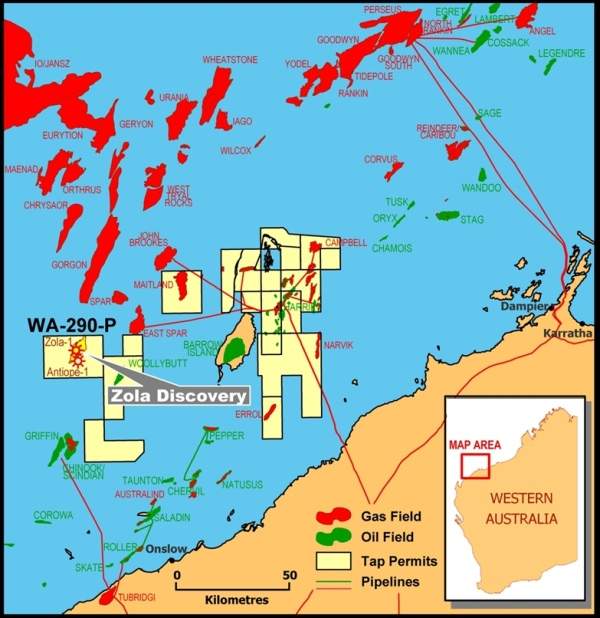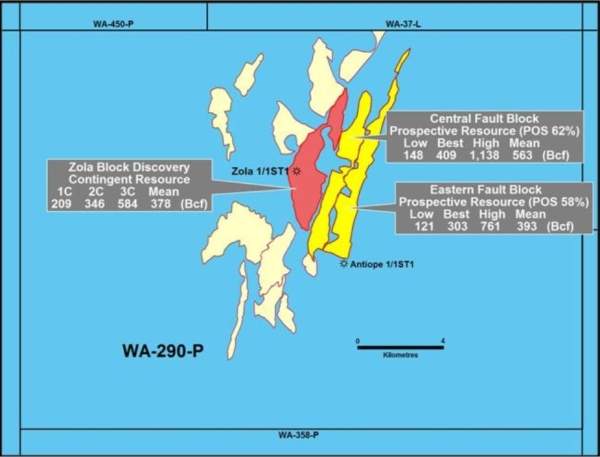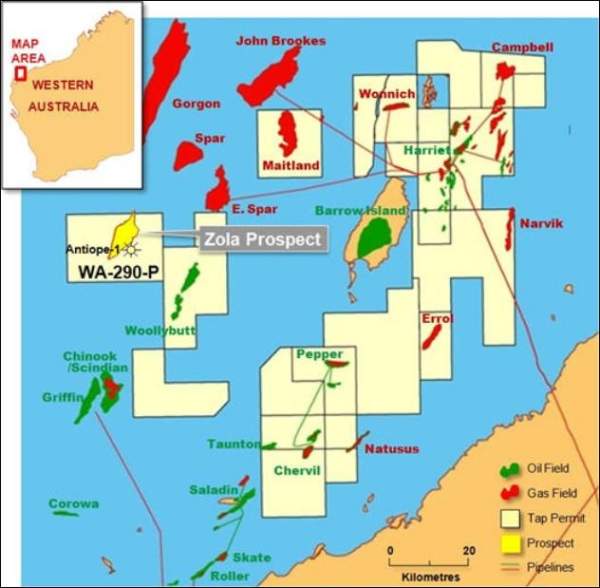Zola Prospect is a gas discovery in the Carnarvon Basin, located 100km from Western Australia. It lies in the WA-290-P permit south of the Gorgon gas field. The permit spans 482km2 in 656ft of water.
The WA-290-P permit is operated by Apache Northwest (30.25%). Partners include Santos Offshore (24.75%), OMV Australia (20%), Nippon Oil Exploration (15%) and TapOil (10%).
Zola is expected to be one of the biggest explored prospects in the Carnarvon Basin. The prospect has attracted global interest from large overseas industry players thanks to its potential.
Location of the Zola prospect
The prospect is located in the Carnarvon Basin, which is Australia’s largest oil and gas producing area. The offshore basin covers 535,000km2 with water depths of up to 11,483ft.
Discovery of the Carnarvon Basin-based gas field
Zola was discovered by the Zola-1 discovery well in April 2011. Drilling of the well started in December 2010 by the Stena Clyde semi-submersible drilling rig.
The well was drilled to a depth of 1,312ft in 935ft of water. It encountered more than 328ft of net gas in three gas bearing sand packages of the Mungaroo formation.
Geology
The Zola prospect is part of a collection of fault blocks known as the greater Zola structure. The fault blocks are similar to those found at the Gorgon gas field.
Appraisal and drilling activities carried out to date at the Zola prospect include those at the Triassic tilted fault block. Sampling data gathered from the drilling activities indicate excellent reservoir characteristics.
Reserves of gas at the Australian prospect
An independent evaluation report prepared by RPS Energy Services has indicated mean prospective resources of the Greater Zola Structure to be 2.3 trillion cubic feet. Mean contingent resources of the prospect are estimated to be 378 billion cubic feet (bcf).
The reserves are estimated to range between 209bcf and 584bcf. The current estimates are based on the drilling activities carried out at the Triassic tilted fault block.
The remaining undrilled fault blocks have been designated as prospective resources. Probabilities of success at these fault blocks range between 62% and 14%. RPS estimates that just three fault blocks will achieve a success rate of less than 30%.
Results of the Zola-1 well indicate that carbon dioxide in the gas reserves content increases with depth. Carbon dioxide and inerts content is estimated to range between 20% and 30% in nearly 90% of the mean contingent resource.
Drilling activities and equipment
A sidetrack well, Zola-1/ST-1, was drilled to the discovery well at a depth of 15,4636ft. The well was drilled during the third quarter of 2011 and encountered 427ft of net gas pay. Both the discovery and sidetrack wells have been plugged and abandoned.
Drilling carried out earlier in Jurassic and Cretaceous structures led to the discovery of a shallow gas discovery called Antiope in 2000 and a small oil discovery called Lauda in 2005. The Antiope discovery is estimated to contain 120bcf of gas reserves.
Stena Clyde is a self-propelled drilling unit built in 1976 at the Rauma Repola shipyard in Finland. It is equipped with a surface blow out preventer (SBOP), enabling operation at depths of 5,000ft.
Following completion of the drilling of the Zola-1 sidetrack well, the rig moved to the Finucane South prospect, situated in the northern part of the Carnarvon Basin, and drilled the Finucane South-1A exploration well.
Field development
Following the discovery by Zola-1 well, a new 3D seismic survey was carried out at the permit in June 2011. Evaluation of the data from the seismic survey is scheduled for completion in May 2012.
Further appraisal and exploration drilling will commence in 2012.
Several options are being examined for the development of the prospect. The existing infrastructure near the prospect may be used for development.
The Antiope gas discovery will also be included in the development plan.










